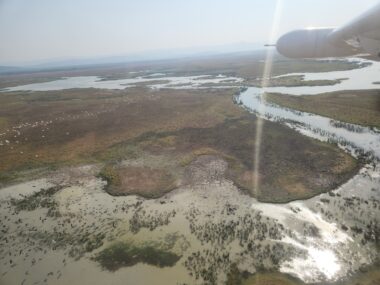La Trobe University and the Nuclear Physics Institute of the Czech Academy of Sciences have discovered the oldest known human occupation of Europe lies near the town of Korolevo in western Ukraine.
New findings, published in Nature, by an international team led by the Nuclear Physics Institute of the Czech Academy of Sciences have confirmed that stone tools at Korolevo are 1.4 million years old.
La Trobe Archaeologist and director of The Australian Archaeomagnetism Laboratory, Professor Andy Herries, who helped date the site, said the find was important because it furthered understanding of the earliest dispersal of our direct ancestor Homo erectus and how Europe was inhabited by early members of this species.
“Previously it was thought that out earliest ancestors could not survive in colder, more northerly latitudes without the use of fire or complex stone tool technology. Yet here we have evidence of Homo erectus living further north than ever previously documented at this early time period.”
The data from Korolevo adds to an emerging picture of the earliest human occupation of Europe that also includes archaeology and fossils from the sites of Artapuerca and Orce in Spain. Originally it was thought that this occupation may have come from northern Africa across the straits of Gibraltar, but the evidence from Korolevo instead suggests that they came from eastern Europe.
“Our team used cosmogenic nuclide burial dating to precisely date the sediment layers containing the stone tools,” Professor Herries said.
“This method is based on dating the time at which quartz has become buried in the sequence. When the quartz is on the surface, it accumulates radioactive isotopes of Aluminium and Beryllium due to cosmic rays, but when it becomes buried, it is shielded from the cosmic rays and the two radioactive isotopes begin to decay at different rates. This gives us a clock to be able to date the age at which the quartz was buried.”
The four-year long research project involved scientists from five countries and more than ten research institutions from around the world.
Professor Herries said the research follows on from his research at Drimolen Cave in South Africa where his team discovered the oldest fossil of Homo erectus dating to two million years ago. From here Homo erectus appears to have migrated into western Asia at the gateway to Europe by 1.8 million years ago and then made its way to what is now China and Indonesia by perhaps 1.6 to 1.4 million years ago.
The stone tools from Korolevo indicate that populations of Homo erectus also moved north-west into Europe by 1.4 million years ago. The data collected as part of the recent study suggests that Homo erectus made its way into the region that is now Ukraine during warm interglacial periods.
“It remains to be seen whether this was part of a more extensive and as yet undiscovered occupation of Europe at this time,” Professor Herries said.
Professor Herries hopes to visit Korolevo to undertake palaeomagnetic analysis in the future, but this is currently impossible due to Russia’s war in Ukraine.
“The current work illustrates the importance and uniqueness to the world of the Ukrainian archaeological record that is currently under threat,” Professor Herries said.
Read the report here: https://www.nature.com/articles/s41586-024-07151-3
Contact details:
Elaine Cooney
[email protected]
0487448734

